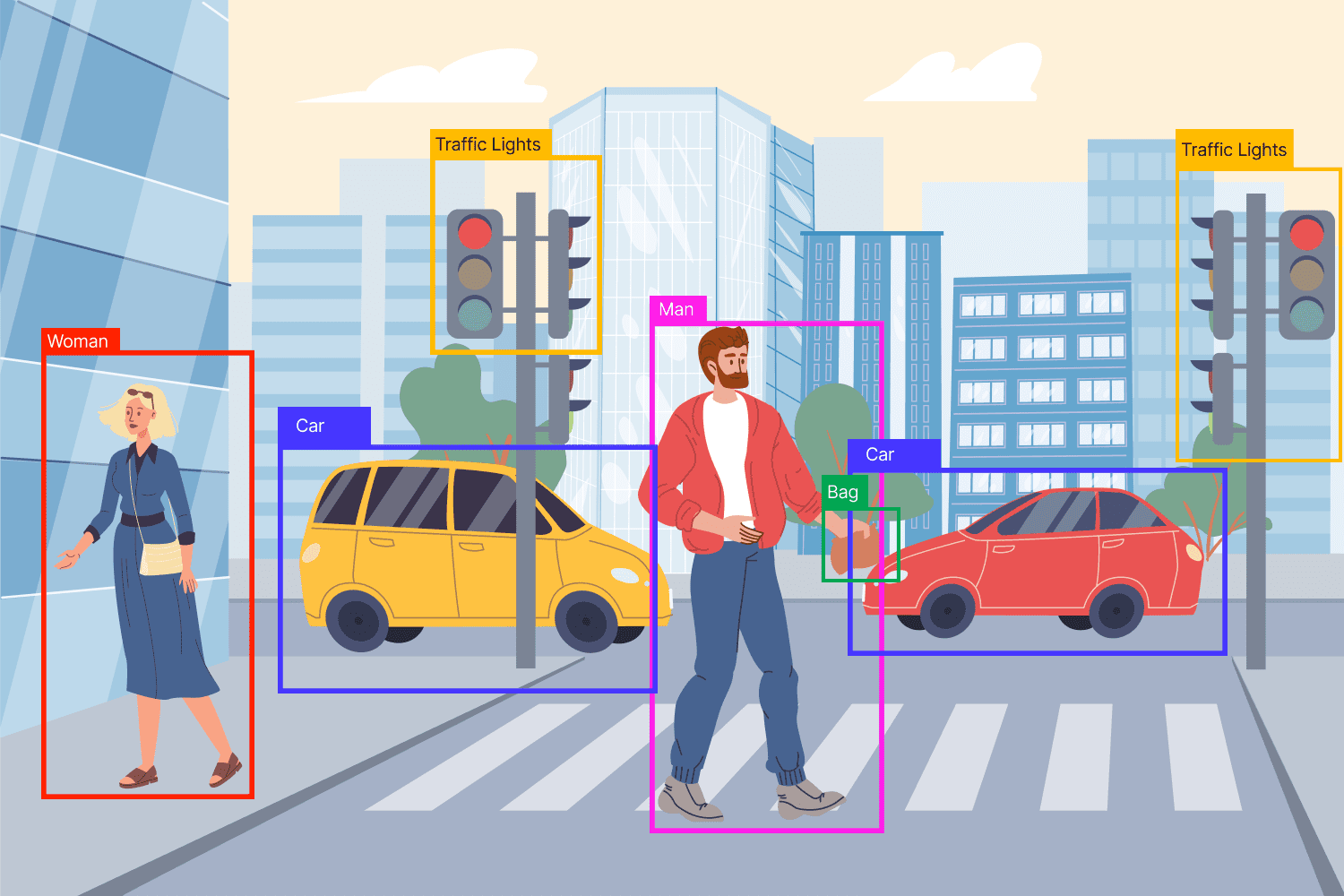Introduction to Object Detection

Object detection is a computer vision task that involves identifying and locating objects within an image or video. The goal is to recognize and classify objects while also providing information about their spatial location through bounding boxes. In other words, object detection not only determines what objects are present in an image but also where they are located.
Key Components of Object Detection
-
Localization
Object detection involves determining the precise location of objects within an image, typically represented by bounding boxes indicating the boundaries of detected objects.
-
Classification
Along with localization, object detection includes classifying the detected objects into predefined categories or classes, allowing the system to understand the identity of each recognized object.
-
Object Recognition
Object detection goes beyond localization and classification by providing a comprehensive understanding of the scene, facilitating more advanced applications.
Applications of Object Detection
-
Autonomous Vehicles
Object detection is critical for the safety and functionality of autonomous vehicles, aiding in the identification of pedestrians, vehicles, and obstacles in the environment.
-
Surveillance Systems
Surveillance cameras leverage object detection to monitor and analyze scenes, identifying potential security threats or unusual activities.
-
Medical Imaging
In medical imaging, object detection is used to identify and analyze anomalies in X-rays, MRIs, or other medical scans.
-
Retail Analytics
Object detection is employed in retail for tracking inventory, monitoring customer behavior, and preventing theft.
-
Augmented Reality
Augmented reality applications utilize object detection to recognize and overlay digital information on real-world objects.
Challenges and Future Developments
-
Scale and Variability
Object detection algorithms must handle objects of different sizes, orientations, and scales. Developing robust models that generalize well to diverse scenarios is an ongoing challenge.
-
Real-Time Processing
Real-time object detection is critical for many applications, including robotics and autonomous systems. Ongoing efforts focus on optimizing algorithms for faster and more efficient processing.
-
Data Annotation
High-quality labeled datasets are essential for training accurate object detection models. The process of annotating data with bounding boxes is labor-intensive and requires careful attention to detail.
-
Integration with Other Technologies
Object detection is often integrated with other technologies such as natural language processing and reinforcement learning for more advanced and contextual understanding.
Demo
A demo video of how object detction works.
Technologies Used
Our project leverages cutting-edge technologies to deliver powerful object detection capabilities. Key technologies include:
- Python
- TensorFlow
- Streamlit
- HTML/CSS
- JavaScript
FAQs
Explore frequently asked questions about object detection and our web application.
Q: How accurate is the object detection system?
A: Our system utilizes state-of-the-art models, providing high accuracy in detecting objects.
Q: Can I integrate this object detection system into my own project?
A: Yes, our system is designed to be modular and can be integrated into various projects with ease.
Conclusion
Object detection is a powerful technology with a wide range of applications, revolutionizing industries and enhancing the capabilities of various systems. As advancements in computer vision continue, object detection will play a crucial role in shaping the future of automation, safety, and intelligent decision-making.
Feel free to customize this information based on the specific focus and audience of your website. You can include visual examples, case studies, and links to relevant research papers or resources for those interested in delving deeper into the topic.
About the Project
This web application showcases the capabilities of object detection in computer vision. It allows users to explore and understand the technology behind identifying and locating objects in images and videos. The project utilizes state-of-the-art object detection models for accurate and efficient results.